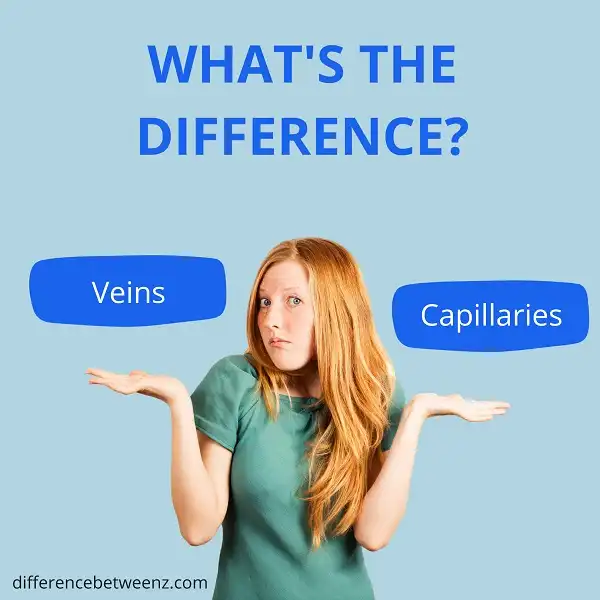Veins vs Capillaries
Difference between veins and capillaries: – Veins, arteries and capillaries are important parts of the human anatomy and play a vital role because they allow blood to flow into the body. Although similar in texture and definition, they differ in structure and function. Due to very slight differences, the terms may be confusing in some cases; it is for this reason that we are here to clarify any doubts that you have in this respect.
Difference between veins and capillaries
Veins
As part of the circulatory system, the veins are blood vessels that carry deoxygenated blood to the heart. In the case of the pulmonary veins, they carry oxygenated blood from the lungs to the heart.
Veins are composed of three layers that are thin, weak and foldable if there is no blood passing through them. The placement of veins in the body varies depending on the person, but they are usually close to the skin, so sometimes can be seen easily in the hands and wrists.
They are actually dark red, but due to the reflection of the light on the skin, they look blue. Veins are generally weaker compared to arteries, since they carry blood at a lower pressure.
Capillaries
Capillaries are the smallest blood vessels in the body. They form part of the microcirculation and are identified as being between 5 and 10 pm in diameter. They are much thinner and fragile than the veins. In fact, they are so narrow that blood cells must travel in a single row to pass through them.
The main function of the capillaries is to connect the veins and arteries. As blood flows from the arteries to the veins and from there to the capillaries, the latter facilitate the exchange of water, oxygen, carbon dioxide and other nutrients between the blood and tissues.
Capillaries also participate in the dissipation of excessive heat. When an area of the body is overheated, the capillaries release the heat contained in the blood into the surrounding tissues. This results in the surrounding tissues taking on a very red appearance.


